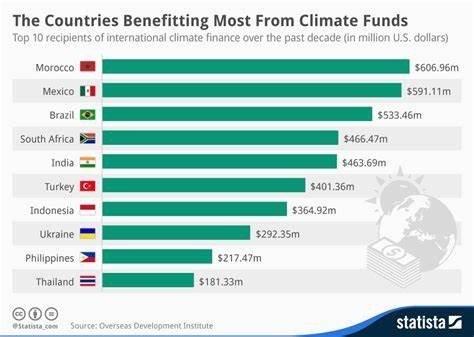
26
Feb
Navigating the Big Five: Demystifying Climate Funds at COP28
As tens of thousands descend upon Dubai for COP28, the annual UN climate summit, the urgency to address the climate crisis intensifies. While discussions shift towards adapting to escalating climate impacts, the question of financing a sustainable future remains a critical one.
Amidst this global gathering, the “Big Five” climate funds emerge as key players, each playing a crucial role in supporting developing nations in their transition to a greener future. Understanding their individual strengths and challenges is essential for ensuring impactful action.
The Global Landscape: From Berlin to Dubai
Little over three decades ago, the world witnessed the signing of a landmark UN treaty, uniting nations in their commitment to combat climate change. This marked the birth of the Conference of the Parties (COP), a yearly platform for international collaboration.
From the initial gathering in Berlin (1995) to the historic Paris Agreement in 2015, COPs have served as catalysts for progress. Yet, the path towards consensus has often been rocky, revealing stark divisions between developed and developing nations, particularly concerning emissions reduction and financial support.
The Big Five: Decoding their Roles and Challenges
As the world grapples with unprecedented climate challenges, the Big Five climate funds stand as crucial resources for developing nations:
1. Green Climate Fund (#GCF): Driving large-scale, transformative climate action across key sectors like energy, cities, land use, and resilience.
2. Global Environment Facility (#GEF): Addressing a broader range of environmental challenges, including biodiversity conservation, land degradation, and international waters.
3. Climate Investment Funds (#CIF): Piloting and demonstrating low-carbon and climate-resilient development pathways through its two sub-funds, #CTF and #SCF.
4. Special Climate Change Fund (#SCCF): Focusing on adaptation projects for vulnerable nations, particularly LDCs and SIDS.
5. Least Developed Countries Fund (#LDCF): Providing tailored adaptation support to Least Developed Countries, addressing their unique needs and challenges.
Each fund faces distinct challenges, such as securing reliable funding, ensuring long-term project sustainability, and demonstrating tangible impact.
Charting a Path Forward: Empowering Action and Building a Sustainable Future
Understanding the Big Five climate funds is crucial for maximizing their effectiveness and propelling impactful action towards a sustainable future.
By supporting these funds, staying informed about the latest developments, and holding leaders accountable, we can collectively empower communities, drive innovation, and build a brighter future for generations to come.
Subscribe to Global Empowerment Leadership today and stay informed about the latest developments in climate action. Subscribe here: https://lnkd.in/gBvH_NvW